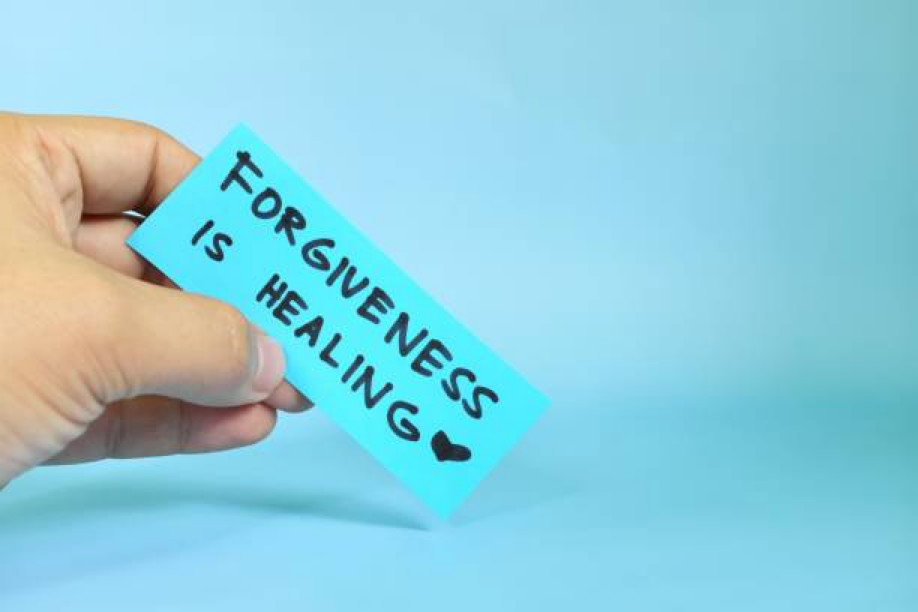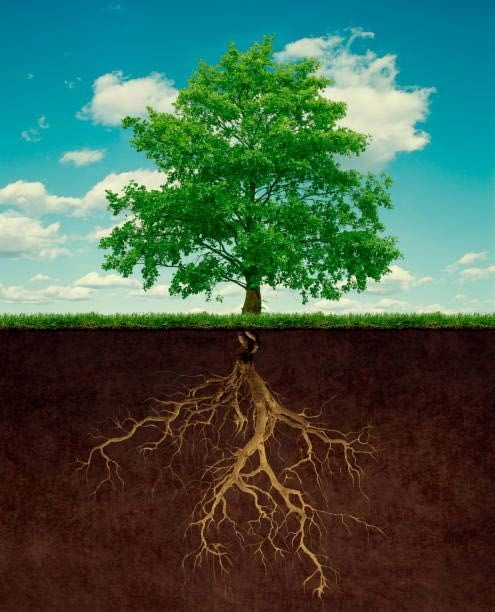Our Blog
We hope that you find the following information useful.

As a Catholic therapist, I often sit with clients who are wrestling with a deeply human question: When is it the right time to make amends ? Whether it’s reaching out to someone who has hurt them, or considering their own responsibility in a fractured relationship, the process of healing often leads us into the tender territory of reconciliation. But forgiveness and reconciliation aren’t the same thing. Forgiveness is something we’re called to offer freely—an act of the will that releases resentment and gives us peace, even when the other person hasn’t apologized. Reconciliation, on the other hand, is a step that involves two people. And discerning when—or even if—that step should be taken requires wisdom, prayer, and often, boundaries. Let’s explore how we can approach this process with care and courage, supported by both therapeutic tools and the richness of our Catholic faith. Discerning the Right Time to Make Amends Discernment is a familiar concept in Catholic life. We use it to seek God's will in big decisions—vocations, careers, relationships. But it’s just as important in the smaller, more personal moments too, like choosing when to reach out to someone who has hurt us, or someone we may have hurt. Therapy can be a valuable space for this kind of discernment. Sometimes the desire to make amends comes from a sincere place of healing and readiness. Other times, it may be driven by guilt, pressure, or a longing for closure that the other person may not be able to give. In our sessions, I often help clients explore their motivations. Are you seeking peace, or permission? Healing, or validation? Discernment is about honesty—with yourself, with God, and with your emotional limits. St. Ignatius of Loyola offers a helpful framework for discernment rooted in prayerful reflection, noticing the movements of the heart. If the thought of reconciliation brings a sense of peace, courage, and compassion, it may be time. If it stirs anxiety, dread, or a sense of obligation, it may be wise to wait, or to approach things differently. The Role of Boundaries in Forgiveness and Healing One of the most common misconceptions I hear, especially among people of faith, is that setting boundaries is somehow un-Christian. But in truth, boundaries are acts of love —toward ourselves and others. They help define what is safe, respectful, and life-giving in a relationship. Forgiveness does not mean allowing someone to continue harming us. Christ calls us to forgive, yes, even “seventy times seven” times (Matthew 18:22), but He does not call us to abandon prudence or endure abuse. Remember, even Jesus withdrew from hostile crowds at times (John 10:39), and He taught that reconciliation involves both repentance and change (Luke 17:3-4). In therapy, we often work on developing “healthy boundaries” that allow us to engage with others from a place of strength and safety. For example, it’s okay to forgive a parent for past wounds without allowing them to manipulate your present life. It’s okay to love a sibling from a distance if closeness continues to result in harm. And it’s okay to hope for reconciliation without forcing it to happen. Boundaries are not walls; they are gates. They give us the freedom to let people in—but only when it is healthy and appropriate to do so. Making Amends with Compassion and Clarity If and when the time does come to make amends, whether as the person extending forgiveness or the one asking for it, approaching the conversation with humility and clarity is essential. We can take inspiration from the Sacrament of Reconciliation, where the process of confession involves examining our conscience, naming our sins, expressing true contrition, and receiving both forgiveness and guidance. Similarly, when making amends in our personal lives, we begin by acknowledging what happened—not defensively, but honestly. We share how the situation has affected us. We listen. We don’t demand immediate restoration, but we open the door to it. And sometimes, we might take that step and find that the other person isn’t ready. Or they respond with defensiveness, denial, or more harm. That’s when we return to our boundaries. Forgiveness is still possible, but reconciliation may need to remain a hope rather than a present reality. Spiritual Guidance Along the Way Throughout this process, our faith can be an anchor. Prayer becomes a conversation with the God who knows every wound and walks with us through every step of healing. The saints offer examples of both radical forgiveness and wise discernment. St. Monica, for instance, teaches us about perseverance in love and prayer without enabling harmful behavior. St. Maria Goretti’s story is often cited for her forgiveness, but we also remember her clarity in saying no to harm. And of course, the Sacraments nourish us. Receiving the Eucharist strengthens us to love like Christ. Confession helps us experience God’s mercy, so we can extend it more freely to others. Spiritual direction can also be helpful when navigating complex relationships and emotional burdens through a faith-based lens. Trusting the Slow Work of Healing Making amends and setting boundaries aren’t one-time decisions. They are part of an ongoing, unfolding process of healing. We may feel ready one day and hesitant the next. That’s okay. Forgiveness is not linear, and relationships—especially broken ones—rarely heal overnight. But I’ve seen firsthand the beauty that emerges when people engage in this work with courage. When they honor both their pain and their desire for peace. When they protect their hearts with boundaries, but still remain open to love. And when they trust that, even if reconciliation is not possible now, it may one day be—with God’s grace. In Conclusion If you’re in the midst of wrestling with whether to make amends, take heart. It’s not an easy decision, and it doesn’t have to be rushed. Therapy can offer tools and support. Your faith can offer wisdom and hope. And both can help you move forward with peace. Forgiveness will always be a part of the journey. But reconciliation? That’s something we discern, with prayer and prudence. And no matter where you land—whether you reach out, stay silent, or hold space from afar—you are not alone in the journey. If you haven’t yet read Part One of this series, I encourage you to explore the foundations of forgiveness and healing in both therapy and Catholic tradition. That post dives into the inner process of releasing pain and embracing God’s mercy—a powerful first step before considering reconciliation. May you be filled with gentleness, wisdom, and the peace that comes from the One who forgave us first. Forgiveness can feel impossible at times—but it’s also one of the most healing gifts we can give ourselves. If you're carrying the weight of resentment or hurt and feel ready to explore a path toward release and peace, therapy can help. At Holy Family Counseling Center , we create a safe space to process the past, understand your emotions, and move forward with intention. Connect with us when you're ready—we’re here to walk that path with you.

We often have more control than we realize. I’m going to lead you through an exercise in order to illustrate this point. Visualize a tree with deep roots and a strong trunk leading up into beautiful branches and leaves. Oftentimes, we retain concepts better if we can see it mapped out. To that end, let’s do a little art therapy together and when you have completed your masterpiece, you can put it on your refrigerator or somewhere that you’ll notice it often: First draw a tree trunk with the roots showing. Under half of the roots write the word FEAR in dark, shaky, ominous looking letters. Under the other half of the roots write LOVE in happy looking handwriting (maybe pretty cursive if you dare). Vertically up the tree trunk write “thoughts/beliefs”. Now it’s time to add lots of branches, twigs, and leaves. Among these branches, add the wording “actions/behaviors” throughout the branches. If you are looking for extra credit, add a variety of nice healthy looking fruit and some rotting fruit with flies. Proverbs 4:23 states “Above all else, guard your heart, for everything you do flows from it.” In most circumstances, at the root of our thoughts is either fear or love. These thoughts then drive our actions and behaviors. Sometimes we are coming from a solid, healthy place and other times from a shaky, fear based place. This is worth looking at in order to grow more and more into the emotionally healthy individual we have the potential to become. All fear based thinking is not detrimental obviously. God created us with healthy fight or flight instincts for when we are in actual danger. This is of course a good thing. For purposes of learning how to live a more emotionally balanced life, we’re looking at thoughts that come from an unhealthy fear which could potentially drive behaviors and actions that don’t serve us well. Thoughts Drive Behavior There are ten top cognitive distortions. Let’s break this down a little. Cognitive means having to do with the brain. Distortions are things that are twisted, so basically cognitive distortions are twisted, unhealthy or irrational thoughts. We have more control over our lives if we operate from a place of clear, healthy, rational thoughts. Everyone experiences some of these types of thoughts so it’s good to know that it’s “normal”. It’s what we do with these thoughts that matters. Do we buy into the lie that we’ve told ourselves or do we remind ourselves of the truth? If you tracked these negative thoughts throughout the week, it would be surprising to see how often this happens. Let’s look at the top 10 cognitive distortions. They’re not in any particular order but we each have a pattern of our “favorites” that we default to when we engage in what some call “stinking thinking”. All or Nothing Thinking - also known as black and white thinking. Usually things in life aren’t 100% one way or the other and the truth is somewhere in between in the gray area. Words such as never and always fall into this category. The words usually, often and sometimes are probably more truthful in most circumstances. Overgeneralizing - an example would be seeing an event as a never-ending pattern. A student with good grades being concerned that they’re going to flunk a course because of one failing quiz grade is a good example of this. Mental Filter - dwelling on the negatives and ignoring the positives. When this happens, the mind dwells on the glass being half empty. This is not only discouraging for the person who chooses to live this way, but also makes it difficult for others to be around them often. Discounting Positives - an example is not giving any credit for that which is good in a person and only paying attention to what needs improvement. Jumping to Conclusions- the thoughts don’t always match the facts. There are subsets of this type of distorted thinking. One is Mind Reading when we assume we know what the other person is thinking for instance. This is a common relationship issue. We need to state what we have to say instead of believing the other person already knows. Fortune Telling also is a way that we oftentimes falsely decide that we know how something is going to happen. We all know those who have had something negative happen in the morning and then decide that this is going to be a bad day. Their negative thinking is usually what propels the rest of the day to be less than desirable. Their self-fulfilling prophesy informs how they choose to handle the rest of the day. Magnification and Minimization - making things larger or smaller than they actually are. We’ve all seen a mountain made out of a molehill or something huge being discounted as being trivial. Emotional Reasoning - letting feelings be regarded as truth such as I feel unworthy therefore I am. Should Statements - when we use should/should not, must, have to or similar language about ourselves or others, we are self-bullying or other bullying. An example would be if a person thought that as a good parent they have to read a bedtime story every night to their child. The truth is that as a good parent, they get to/are happy to read a story nightly but they could still be a good parent without imposing this on themselves. A parent with a migraine could let their child know that they’re not feeling well and will read two stories the next night and still fulfill their idea of being a good parent. Labeling -calling oneself a loser for instance because you made mistakes, instead of stating the truth that you made a mistake. Self-Blame and Other-Blame -taking on blame that isn’t rightfully all yours or blaming others when the fault lies partially with you also. All of these unhealthy ways of thinking can cause us to have inappropriate responses to life’s situations. When we have a negative thought, we need to slow down and ask ourselves if it’s legitimately true or have we exaggerated or added incorrect meaning to a situation. When we operate from a place of truth, our behaviors are going to be more sane, more productive, life-giving and fruitful. Knowledge is power. Now that you know, practice paying attention to your thoughts. If they are true, operate from that place for the best outcomes. If the thoughts are not truthful and therefore won’t serve you well, it’s time to regroup and remind yourself of what the actual truth is. It’s ok to have your initial thought be an unlovely, negative thought that’s untrue. What matters is what you do with it. Hopefully your response is to turn it around into the truth and proceed from there. Looking for cognitive distortions can be like a treasure hunt. Your response of countering with the truth is pure gold. If this exercise resonated with you, try repeating the “Thought Tree” once a day for a week and notice one cognitive distortion you catch—then practice swapping it for a truer, kinder thought. If you'd like help applying these tools in therapy, please contact us at 678-993-8494 or visit Holy Family Counseling Center . If you ever feel overwhelmed or have thoughts of harming yourself, contact local emergency services or the 988 Lifeline immediately. Small shifts in how we think add up—you're not alone on this path to greater emotional health.

Marriage, within the Catholic tradition, is more than a civil contract; it is a sacred covenant—a sacrament that mirrors Christ's love for the Church. This divine institution calls couples to a life of mutual self-giving, fidelity, and openness to life. However, the journey of married life is not without its challenges. Even the most devout couples may encounter periods of difficulty, whether due to communication breakdowns, emotional distance, or external stresses. In such times, marriage therapy can serve as a beacon of hope, offering tools to rebuild and strengthen the marital bond. This article delves into the intersection of therapeutic practices and Catholic teachings, exploring how professional counseling can align with and enhance the sacramental understanding of marriage. The Catholic Understanding of Marriage At the heart of Catholic doctrine is the belief that marriage is a sacrament instituted by Christ. As outlined in the Catechism of the Catholic Church, "The marriage covenant, by which a man and a woman form with each other an intimate communion of life and love, has been founded and endowed with its own special laws by the Creator" . This covenant is characterized by three essential goods: unity, indissolubility, and openness to fertility.( Vatican , USCCB ) Unity Marriage unites a man and a woman into "one flesh," transcending individual desires to form a singular, harmonious partnership. This unity is not merely physical but encompasses emotional, spiritual, and intellectual dimensions. It calls for a deep, abiding connection that reflects the unity between Christ and His Church. Indissolubility The Catholic Church teaches that marriage is a lifelong commitment. Jesus' words, "What therefore God has joined together, let not man put asunder" (Mark 10:9), underscore the permanence of the marital bond. This indissolubility is not contingent upon circumstances but is a testament to the enduring nature of divine love.( St. Charles Borromeo ). Openness to Fertility Marriage, in its fullest sense, is ordered toward the procreation and education of children. The Catechism states, "Children are the supreme gift of marriage and contribute greatly to the good of the parents themselves" . Even couples who are unable to have children can live out this openness through acts of love, hospitality, and service.( Vatican ). The Role of Therapy in Strengthening Marriages While the sacramental understanding of marriage provides a spiritual framework, therapy offers practical tools to navigate the complexities of married life. Professional counseling can help couples address issues such as communication breakdowns, emotional disconnection, and external stresses. Therapists employ various modalities to assist couples in strengthening their relationship a few of which are included below: Emotionally Focused Therapy (EFT) Developed by Dr. Sue Johnson, EFT is grounded in attachment theory and focuses on the emotional bond between partners. It aims to identify negative interaction patterns and replace them with positive cycles of interaction. EFT has been shown to be effective in treating relationship distress and fostering secure emotional bonds .( Verywell Mind ) The Gottman Method Based on extensive research by Drs. John and Julie Schwartz Gottman, this method emphasizes the importance of building a sound relationship foundation, managing conflict constructively, and creating shared meaning. It provides couples with practical tools to enhance communication and deepen intimacy .( Verywell Mind ). Imago Relationship Therapy Developed by Dr. Harville Hendrix and Dr. Helen LaKelly Hunt, Imago Therapy focuses on transforming conflict into healing opportunities. It encourages partners to understand each other's childhood wounds and how they influence current relationship dynamics. The therapy employs structured dialogues to promote empathy and understanding .( Verywell Mind ) Integrating Therapy with Catholic Teachings Therapy and Catholic teachings are not mutually exclusive; rather, they can complement each other in fostering a thriving marriage. Catholic couples can integrate therapeutic practices with their faith by: Engaging in Shared Prayer: Regular prayer together invites God's presence into the relationship, fostering spiritual intimacy. Participating in the Sacraments: Regular reception of the Eucharist and the Sacrament of Reconciliation strengthens the couple's bond and commitment. Living Out Catholic Values: Practicing virtues such as patience, kindness, and forgiveness aligns with both therapeutic principles and Catholic teachings. Seeking Pastoral Support: Engaging with a parish priest or spiritual director can provide guidance and support in living out the sacrament of marriage. By integrating therapy with Catholic teachings, couples can cultivate a deeper, more resilient, and more loving union that reflects God's own love. Marriage, as envisioned in the Catholic faith, is a sacred covenant that calls couples to live out a love that is self-giving, faithful, and open to life. While challenges are inevitable, therapy offers couples the tools to navigate these difficulties and strengthen their bond. By integrating therapeutic practices with Catholic teachings, couples can build a marriage that not only endures but thrives, becoming a testament to the love of Christ for His Church. Every relationship faces seasons of struggle, and seeking support is a sign of strength—not failure. Whether you're looking to improve communication, rebuild trust, or simply grow closer, we’re here to help. At Holy Family Counseling Center we offer couples therapy rooted in empathy, honesty, and proven tools to strengthen your connection. Reach out today and let’s work together to nurture your marriage.

Grief & Hope: Therapy and Catholic Teachings on Loss and Eternal Life Grief is something that touches all of us eventually. It may arrive suddenly with the death of a loved one, linger quietly through the end of a relationship, or follow the quiet disappointment of a long-held dream falling apart. Whatever the cause, the pain of loss often arrives uninvited and stays longer than we expect. It can leave us feeling like the ground beneath our feet has shifted, upending our sense of security, meaning, and identity. In these moments, therapy offers a way to make sense of the pain, to find meaning in suffering, and — slowly but surely — to begin healing. For people of faith, particularly within the Catholic tradition, grief is not something to be merely endured. It’s something that can be transformed through the lens of Christ’s death and resurrection. By combining psychological support with theological hope, the journey through grief can become not just a passage through sorrow, but also a path toward deeper love, connection, and peace. The Complexity of Grief: Not a Straight Line One of the most common misconceptions about grief is that it follows a predictable sequence. Many of us are familiar with the "five stages of grief" — denial, anger, bargaining, depression, and acceptance. These stages, first introduced by Elisabeth Kübler-Ross, are helpful in recognizing the emotions involved in loss, but they’re not a strict roadmap. Real grief is messy (see our blog article here ). It doesn’t move in a straight line. Some days, you might feel like you’ve made peace with the loss; on others, a small memory can unravel you unexpectedly. Therapists understand this complexity. In therapy, you’re given a space to express the full range of your emotions without judgment. That in itself can be healing—being able to cry, vent, or sit silently and just be seen. Many therapists use grief specific approaches to help people understand the depth of their emotions and develop tools to cope. These approaches focus not only on processing the pain but also on exploring the significance of the relationship that was lost and the meaning that can still be drawn from it. For some, however, grief becomes more than sorrow. It becomes stuck. This form of suffering, often referred to as complicated grief or prolonged grief disorder (PGD), involves intense, long-lasting emotions that disrupt daily life and relationships. These symptoms can include persistent yearning, preoccupation with the loss, emotional numbness, or an inability to experience joy. When grief lingers and paralyzes rather than gradually integrates into life, therapy becomes not just helpful—it becomes essential. In these more complex cases, the goal is to help individuals accept the reality of their loss while reengaging with life in meaningful ways. It’s not about forgetting or moving on. It’s about learning to carry grief differently—to make space for both sorrow and hope. A Catholic Lens on Death, Loss, and What Comes After While therapy addresses the psychological and emotional dimensions of grief, Catholic theology speaks to the spiritual side of the experience. Our faith doesn’t deny the sorrow of death. It fully acknowledges the pain of separation, the weight of absence. But it also insists—gently but firmly—that death is not the final word. At the heart of our faith is the resurrection of Christ. This central truth shapes how Catholics understand death—not as an end, but as a passage to new life. In the Gospel of John, Jesus offers the words that echo across centuries: “I am the resurrection and the life. Whoever believes in me, though he die, yet shall he live” (John 11:25–26). These words are not a dismissal of grief; they are an anchor in the storm of sorrow, a promise that love is stronger than death. This belief is not just abstract theology. It’s woven into the very rituals that surround death. Catholic funeral rites, including the Vigil, the Funeral Mass, and the Rite of Committal, are structured to help mourners grieve, pray, and hope. The Mass of Christian Burial is both a farewell and a celebration. It entrusts the soul of the deceased to God’s mercy while comforting those left behind with prayers, Scripture, and the Eucharist—a visible sign of Christ’s victory over death. We also draw comfort from the communion of saints—the belief that the faithful, living and deceased, remain united in Christ. This sense of connection helps many people feel that their loved ones are not lost to them, but remain close in spirit, interceding and awaiting reunion in eternal life. It transforms the relationship, but it does not sever it. According to The Catholic Free Press, prayer during and after the funeral, the support of the faith community, and the hope of resurrection all contribute to easing the sting of grief. This hope doesn’t erase the sadness, but it surrounds it with meaning. Finding Healing in the Integration of Therapy and Faith What’s truly powerful is the way that therapy and faith can work together in times of loss. You don’t have to choose between the two. In fact, integrating both can offer the most comprehensive support. Therapy provides the space to wrestle with painful emotions, while faith gives language to mystery, sorrow, and redemption. Some therapists incorporate a client’s spiritual beliefs directly into the therapeutic process. A Catholic might be invited to reflect on Scripture, to write a letter to their loved one as a form of prayer, or to explore the concept of redemptive suffering—that even in our pain, we are united with Christ. These spiritual practices can offer comfort and a sense of sacredness during a time that might otherwise feel chaotic and empty. Faith can also inspire action in grief. Many people find healing in honoring their loved one through acts of love and service—volunteering, creating something meaningful, or simply continuing traditions that keep memories alive. These acts don’t make the grief go away, but they help reframe it as something that can shape your life with beauty and purpose. Community plays a vital role here too. Being part of a parish, attending grief support groups, or simply leaning on trusted friends in faith can make an incredible difference. Shared prayer, communal rituals, and simply being around others who “get it” can bring relief that is both emotional and spiritual. Moving Through Grief Toward New Life It’s important to remember that healing doesn’t mean forgetting. Love doesn’t end when someone dies. It changes form. Grief is a sign of love, and love, in the Catholic tradition, is eternal. This perspective is beautifully echoed in the words of St. Augustine: “If you knew the gift of God and what heaven is... wipe away your tears and weep no more if you love me” ( Our Sunday Visitor ). These aren’t instructions to suppress sorrow, but reminders that death is not the end of the story. When we allow ourselves to grieve fully, supported by therapy and guided by faith, we begin to see how grief itself can be transformed. It doesn’t go away, but it becomes lighter, more manageable. It makes room for joy again, for connection, and for a deeper appreciation of the people still present in our lives. In time, those who grieve may find themselves living not in spite of loss, but in honor of it—carrying forward the love they received, guided by the hope of eternal reunion, and strengthened by the compassionate tools of therapy and the enduring promises of their faith. Final Reflection Grief will never be easy, but it can be holy. It can be a time of brokenness and also of deep transformation. With the help of compassionate therapists and the enduring light of Catholic hope, it is possible to find meaning, peace, and even renewal in the shadow of loss. You don’t have to go through this alone. Whether it’s sitting with a therapist, lighting a candle at Mass, whispering a prayer through tears, or simply reaching out to someone who understands—every small step matters. Together, therapy and Catholic theology remind us that grief is not a sign of weakness or failure. It is a testament to love. And love, in the end, is what endures. Healing begins with connection—and taking the first step can be the hardest part. If you’re feeling overwhelmed, stuck, or simply curious about how therapy could help, we invite you to connect with us at Holy Family Counseling Center. Our team is here to listen, support, and walk alongside you with care and intention. Send us a message or give us a call—we’re ready when you are.

As a therapist, I often find myself sitting across from individuals grappling with the raw, unsettling reality of suffering. It’s an undeniable aspect of the human condition, isn't it? Whether it emerges from the searing pain of loss, the relentless grip of illness, the sting of injustice, or the quiet battles waged within our own hearts, suffering has a way of leaving us feeling adrift, hopeless, and questioning the very fabric of our existence. In my practice, I’ve witnessed countless times how people search for a beacon of meaning in these darkest of hours. And what a privilege it is to walk alongside them, guiding them not only with the insights of modern psychology but also with the profound wisdom of our Catholic faith, drawing upon the transformative power of the Cross. The Therapist’s Lens: Holding Space for Pain and Cultivating Meaning When someone walks into my office, burdened by suffering, my first and most sacred task is to simply be there . To create a safe, supportive space where they can unpack the heavy emotional and psychological impact of what they're enduring. It's a space free of judgment, where tears are welcome, and anger, fear, and despair can be expressed without shame. In the world of therapy, we have a number of powerful approaches that specifically address these deep questions of meaning and purpose in the face of adversity. Take, for instance, Existential Therapy . This approach, at its heart, is about helping individuals confront the inherent anxieties of existence – the big questions about life, death, freedom, isolation, and meaning. It doesn’t shy away from the harsh realities of suffering but rather encourages clients to lean into these experiences, to find agency and responsibility in their response (Yalom, 1980). We explore their values, asking: "What truly matters to you? What principles guide your life, especially when things are falling apart?" It’s in identifying these core values that a sense of purpose can begin to emerge, even amidst the chaos. Then there's Meaning-Centered Psychotherapy, which builds directly on these ideas. Here, the focus is more explicitly on helping individuals discover or rediscover sources of meaning in their lives. This isn't about imposing meaning; it's about helping the person unearth what genuinely resonates with their spirit. It might be through creative expression, service to others, cultivating relationships, or simply by the attitude they choose to adopt in the face of unavoidable suffering (Frankl, 2006). We work on developing coping strategies that don't just numb the pain but actively foster resilience. We learn to sit with discomfort, to process grief in all its messy stages, to manage chronic pain, and to find ways to adapt to circumstances that may never fully resolve. As a therapist, I see my role as an illumination – shining a light on the pathways to healing and adaptation. We explore past wounds, identify unhelpful thought patterns, and build healthier emotional regulation skills. It's about empowering the individual, helping them to find their own internal resources and strengths to navigate their journey. But for me, as a Catholic, there's always another layer, a deeper truth that informs my understanding of suffering. The Catholic Heart: The Transformative Power of the Cross This is where the profound beauty of our Catholic faith truly comes into play. While therapy provides invaluable tools for how to cope, Catholicism offers a unique, profound perspective on why we suffer and what purpose that suffering can ultimately serve. It’s through the lens of the Cross that we begin to understand. Think of Jesus Christ. He, who was innocent, blameless, and divine, willingly embraced suffering, humiliation, and death. And He did it not because suffering is inherently good, but out of an unfathomable, redemptive love for humanity. His Passion and Death weren't just a historical event; they were a profound act of self-giving that fundamentally transformed suffering itself. It shifted it from a seemingly meaningless burden into a potential source of redemption, a path to deeper union with God (Catechism of the Catholic Church, 1997). I often share with my clients the words of St. Paul from his Letter to the Romans (5:3-5), words that resonate so deeply with the Christian experience: "And not only so, but we glory also in tribulations, knowing that tribulation worketh patience: And patience, experience; and experience, hope: And hope confoundeth not: because the charity of God is poured forth in our hearts, by the Holy Ghost, who is given to us. (Romans 5:3-5, Douay-Rheims translation). This isn't a call to masochism, nor does it mean we should ever seek out pain. Our God is a God of love, and He desires our flourishing, not our misery. The Catholic understanding of "redemptive suffering" means that when we, in our humility and faith, unite our own trials with Christ’s suffering on the Cross, our difficulties can take on a new, sacred meaning and purpose (Pope John Paul II, 1984). This union can manifest in many ways. It might involve offering our struggles, our headaches, our disappointments, our grief, or our chronic pain for the intentions of others – for the souls in purgatory, for a sick friend, for a struggling family member, for the salvation of the world. It’s a profound act of love, turning our own suffering outwards in solidarity with others and with Christ. Through this process, we often find ourselves growing in unexpected ways. We cultivate compassion and empathy for those who also suffer, recognizing our shared humanity. We become less self-absorbed and more attuned to the needs of others. Our faith deepens as we lean more heavily on God's grace, realizing our own limitations and His boundless strength. It’s a paradox: in embracing our weakness and vulnerability, we find true spiritual strength. Echoes of Hope: The Lives of the Saints Sometimes, when a client feels utterly overwhelmed and questions how anyone could possibly endure what they are experiencing, I turn to the stories of the saints. Their lives are powerful testaments to the human capacity for finding profound meaning in the midst of unimaginable trials. Consider the unwavering faith of St. Thérèse of Lisieux , who endured profound spiritual darkness and physical suffering in her final years, yet clung to her "little way" of love and trust, offering every discomfort to God. Or St. Padre Pio , who bore the visible wounds of Christ in the stigmata, living a life of constant physical pain yet pouring out spiritual guidance and healing to countless souls. Think of St. Maximilian Kolbe , who offered his life in exchange for another in a concentration camp, an ultimate act of self-giving love rooted in his faith. These aren't just historical figures; they are companions on our journey. Their stories remind us that even in the darkest valleys, God’s grace is sufficient to sustain us. They show us that suffering, when united with Christ, can indeed become a crucible for holiness, bringing forth spiritual growth and a deeper union with God that transcends earthly understanding. Their lives offer a profound witness to the truth that suffering, while never desired, can be transformed into a source of enduring hope. Weaving the Threads: Therapy and Faith in Harmony So, how do I, as a Catholic therapist, weave these threads together in my practice? It’s not about choosing one over the other, but rather seeing them as complementary paths leading to holistic healing and deeper meaning. When a client is experiencing intense grief, for example, we'll use therapeutic techniques to process the emotions: validating their sadness, acknowledging the pain of loss, and helping them develop healthy coping mechanisms. We might explore the stages of grief, identify triggers, and work on rebuilding a life after loss. But alongside this, if they are open to it, we can explore the spiritual dimension of their grief. We can talk about the hope of resurrection, the communion of saints, and how their love for the departed can continue, transformed by prayer and intercession. We can explore how God is present even in the deepest sorrow, holding them in their pain. Similarly, if someone is struggling with chronic illness and the limitations it imposes, therapy can help them adjust to their new reality, manage frustration, and prevent isolation. We can work on cognitive reframing – changing negative thought patterns – and finding new ways to engage with life and purpose. From a Catholic perspective, we can also discuss how their illness, though difficult, can be offered as a prayer, how it can be a means of drawing closer to Christ in His suffering, and how it can be a source of grace for others. We can explore the idea of finding joy in small moments, of radiating peace even amidst discomfort, and of trusting in God's plan even when it's unclear. The beauty of integrating therapy with Catholic principles is that it offers a truly holistic approach. Psychotherapy helps us understand our human nature – our emotions, our thoughts, our behaviors, and our relationships – and provides practical strategies for navigating life's challenges. It helps us to heal past wounds, build resilience, and live more fully in the present moment. The Catholic faith, on the other hand, provides the ultimate context for our suffering, infusing it with divine meaning, offering hope that transcends earthly limitations, and connecting us to something far greater than ourselves. The Journey of Meaning Ultimately, the journey of finding meaning in suffering is a deeply personal one. It’s not about denying the pain or sugarcoating hardship. It's about acknowledging the reality of suffering, bravely facing its challenges, and then, with the help of both therapeutic wisdom and the grace of God, discovering the seeds of hope, growth, and even joy that can blossom within it. As a Catholic therapist, my greatest hope for my clients is that they leave my office not just with coping skills, but with a renewed sense of purpose and an abiding conviction that even in their darkest hours, they are not alone. That Christ is with them, carrying their burdens, and that their suffering, when united with His, can become a profound source of meaning, bringing them closer to God and transforming them into vessels of His love for the world. It’s a challenging path, yes, but it’s a path that ultimately leads to true healing, enduring hope, and a deeper encounter with the unconditional love of God. If anything in this post resonated with you, know that you don’t have to navigate it alone. At Holy Family Counseling Center , we’re here to support you with compassionate, evidence-based care tailored to your unique story. Whether you're just starting to explore therapy or ready to take the next step, we’d love to talk. Reach out today to schedule a free consultation or ask any questions—we’re here to help. References: Catechism of the Catholic Church. (1997). Part One, Section Two, Chapter Two, Article 4, Paragraph 618. Libreria Editrice Vaticana. Frankl, V. E. (2006). Man's Search for Meaning. Beacon Press. (Original work published 1946). Pope John Paul II. (1984). Salvifici Doloris (On the Christian Meaning of Human Suffering). Libreria Editrice Vaticana. Romans 5:3-5 (New American Bible Revised Edition). Yalom, I. D. (1980). Existential Psychotherapy. Basic Books.







